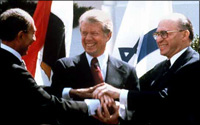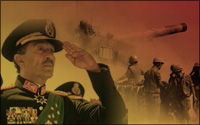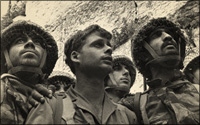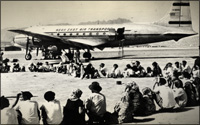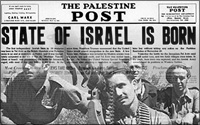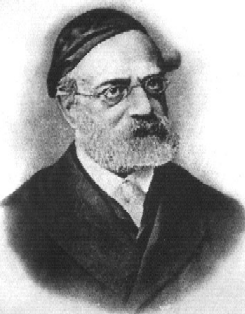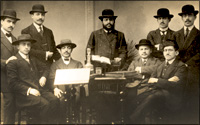 In the 19th century in Russia there occurred a drastic change in Jewish life whose ripple effects are still felt today. For the first time in perhaps seven or eight centuries Jews orchestrated a direct confrontation with traditional Judaism.
In the 19th century in Russia there occurred a drastic change in Jewish life whose ripple effects are still felt today. For the first time in perhaps seven or eight centuries Jews orchestrated a direct confrontation with traditional Judaism.
Haskalah, the Jewish Enlightenment, came in various forms and each form had differing goals, but the general common denominator was to attempt to free Eastern European Jewry from what it viewed as the shackles of an ancient tradition that had somehow outlived its time, and to infuse it with a new vitality that would make it acceptable to their non-Jewish neighbors — or at least, acceptable to the Russian government.
The maskilim (as the followers of Haskalah were called) pushed very hard for a complete reform and change in Jewish life, including a complete reform and change in the system of Jewish education, in order to produce what they said was the “new Jew.” They summed up their idea of the “new Jew” in one phrase: yehei Yehudi b’oholecha, adam b’tzeitzecha, “In your tent you can be as Jewish as you want, but when you go out in the street be like everyone else.”
Time has proven that as a practical matter it was impossible. A person who is not Jewish in the street as well will not end up being Jewish at home. That dichotomy is a painful one, but one that has proven itself again and again in the long history of the Jewish people. It takes time to see it clearly, but it is an unmistakable pattern.
Beginnings of Haskalah
In 1819, in Berlin, an organization was founded called the Verein für Cultur und Wissenschaft der Juden, the “Organization for Culture and Scientific Knowledge of Judaism and the Jews.” Translated into Hebrew it known as Chochmas Yisrael, “The Wisdom of Israel.”
The people who founded it were convinced that traditional Judaism, Orthodox Judaism, was dying and would never reawaken. Therefore, they set out to make a museum that would preserve the treasures of a religion and way of life that would soon cease to exist. Central to their curriculum was the study of Hebrew language, Jewish history and the Bible in a scientific fashion (or a non-scientific fashion).
Not every idea that existed in Germany came east, but Chochmas Yisrael did. It had wide appeal, because the Jews in Eastern Europe were studious, the subject matter was fascinating and many brilliant Jewish young men in Eastern Europe found it an acceptable outlet for their talents.
Haskalah Leaders
In their time, those who took the lead in the Haskalah movement became people of note. One was Nachman Krochmal, who wrote a famous philosophic work, the thrust of which was that the old had to go, and the new had to take over. The title of the book, which was called Moreh Nevuchei Hazman, “The Guide for the Perplexed of This Time,” was patterned after the title of Maimonides’ Moreh Nevuchim. But that was where the comparison ended. Krochmal’s book was the first step for producing the ideas of Haskalah in Eastern Europe.
Another Haskalah leader was a trained rabbi, Solomon Judah Rapoport (called by the acronym “Shir”), who a Talmudic scholar of note. But he was also a maskil and because of his adherence to Haskalah he was always engaged in running feuds between himself and other Jews in Galicia.
The Haskalah in Eastern Europe took on a sharper note than the work of Chochmas Yisrael, which existed in Germany and Austria. The people who were the great maskilim in Eastern Europe bitterly hated the traditional camp, and they wrote in a very sarcastic, ironic, derogatory and mocking vein. They mocked the Jewish religion, the Jewish leaders and everything that was Jewish.
Every action begets a reaction. The maskilim brought upon themselves terrible hatred, because they exhibited terrible hatred. No one likes to be mocked. If you disagree with someone, disagree with him, but mocking and inveighing personal insult is usually not going to be taken sitting down.
There are examples of these biting attacks from the first appearance of the Haskalah in Eastern Europe in the 1820s. For instance, Isaac Baer Levinsohn wrote a book called Hefkervelt, which was a mockery of the Jewish religious establishment.
Abraham Mapu (1808-1867) wrote probably the first Hebrew novel of our time, in the mid-1800s, in which he portrayed the rabbinate as rapacious vultures who simply attempted to oppress the Jewish people instead of trying to help them.
Others intellects of Haskalah included Abraham “Adam Dov HaKohen” Lebensohn (1794-1878), Mordecai Ginzberg (1796-1846), Judah Leib Gordon (1831-1892) and Moses Leib Lilienblum (1843-1910). It’s ironic that their names are all but forgotten today. Even in the secular schools in Israel today they command very little attention, because everything that was the basis of their world has been destroyed. The past century has shown it to be invalid, and therefore their ideals have almost no echo in today’s Jewish world. But the harm that they did does have an echo.
Hebrew Haskalah
There were a number of different types of Haskalah. First was what can be called the “Hebrew Haskalah.”
It was based upon making Hebrew the language of the Jewish people. Hebrew, as lashon hakodesh, as “the holy tongue,” had always existed in prayers and holy books. Hebrew Haskalah, however, sought to promote Hebrew as an expression of language like any other language: to write secular, even profane ideas and words in Hebrew. They elevated the Hebrew language itself to a kind of deity, a goal unto itself. Somehow, they convinced themselves that if there would be a great Hebrew literature, the Czar would say, “What a wonderful people; look at that literature! They have revived the Hebrew language! We’re going to be nice to them.”
The Hebrew Haskalah found fertile soil among the scholarly, Talmudic Jews. Therefore, among all the types of Haskalah this was the one that made the most progress among traditional Jewry. It was also the one that was the most difficult to combat.
Yiddish Haskalah
The second type of Haskalah was Yiddish Haskalah, which tried to do for Yiddish what the Hebrew Haskalah tried to do for Hebrew.
The Yiddish Haskalah made a fetish out of the Yiddish language. That was the medium of culture, and very many famous authors wrote in Yiddish. The Yiddish Haskalah is the one that developed the newspapers. Although there were Hebrew newspapers in Eastern Europe as well, the Yiddish newspapers were read by the masses. Yiddish Haskalah also developed the theater, which itself was Yiddish, but not Jewish.
Today, the irony of it is that Yiddish is almost exclusively the preserve of the Orthodox, and in particular the right-wing Orthodox. But for a long time, the Yiddish Haskalah was strong.
Yiddish almost became the language of the State of Israel. When the first Ashkenazic settlers came to the Land of Yisrael, there was a strong debate among them regarding what should be the language of the land, Yiddish or Hebrew. It was only through the perseverance of one man, Eliezer Ben-Yehuda, that the official state language became Hebrew. Nevertheless, for the first 30 years of among the main section of Jewish settlement Yiddish was the language.
Russian Haskalah
The third Haskalah was the Russian Haskalah.
The goal of Russian Haskalah was to make the Jews Russian in dress, habit and language. The Jews would gather on the Sabbath to read Dostoevsky, Tolstoy, Pushkin or whatever works were then in vogue. It was to show the Russians that the Jews were Russian.
Part of the complaint of the Czar — and they felt that the Czar was correct in his complaint — was that the Jews weren’t really Russian. If they weren’t really Russian, then he had a right to do whatever he wanted. So they set about making the Jews Russian.
Socialist Haskalah
The fourth Haskalah, which would come later and be a very strong type of Haskalah, is what we could call the “Labor Union Socialist Haskalah.”
This was based not upon language, although they were mainly Yiddish-speakers and part of the Yiddish cultural stream. However, they did not look upon the Yiddish language as their savior or as their culture. Their culture was basically Marxism.
The publication of the Communist Manifesto by Marx and Engels in the 1800s, the revolutions that occurred throughout Europe in 1848, the labor strikes which existed throughout Europe, the coming of the working class as a strong political force — all of this had a powerful effect upon Jews as well. Socialist Haskalah became the organizer for Jewish trade unions, for Jewish labor unions, for the rights of the workers, for Socialism, and, in its extreme form, for Communism. It became a very strong and potent force within the Jewish world.
Some of the bitterest strikes in all of Eastern Europe involved Jews against Jews: the Jewish labor unions against the Jewish owners. The impetus for violence was very strong, because each side was idealistic: they were doing the work of Heaven.
Jewish society was torn to shreds because of this type of class warfare.
Why they Died
All of these Haskalahs would have died, if not for another type of Haskalah: the Zionist Haskalah. Zionism came and pulled all these embers out of the fire. The reasons that these Haskalahs were waning and would have died are numerous.
First, for reasons that escape us, almost all the Haskalahs cooperated with the Russian government in the enforcement of all these terrible decrees against the Jewish people. They felt that if the Russian government would break the Jewish people and the Jewish religion, then upon the ruins of that people and culture the new Haskalah would be able to rise.
Haskalah failed because it ended up working with the Russian government and thereby earned the deserved enmity of a great section of the Jewish people, who saw in the maskilim behavior that was traitorous and treacherous beyond words.
The second factor was that the maskilim made a serious error in thinking that what they were doing would not evoke any reaction from the traditional camp; that the traditional camp would continue always to allow itself to be painted as old-fashioned reactionaries from another century, the source of all troubles in Jewish life. That did not happen.
Three Reactions from Traditional Judaism
The attack of the maskilim brought to the fore three great movements defending traditional Judaism. The main movement was Chassidism, which had been founded a century earlier. The Chassidim and the maskilim went at it tooth and nail.
As a result of the fight, Chassidus became even a more vital force. The great dynasties of the Chassidim strengthened themselves and spread. If the maskilim represented change they dug in their heels and clung to even the smallest nuance, the smallest custom.
The second group that arose in response to Haskalah was the Yeshiva movement. In the 1820s, there developed a new style of higher education among young Jewish men. Even though it was a system for the elite — rather than for the masses, like today’s yeshiva system — it produced so many great people and such a high level of scholarship that the Haskalah more than found its match.
These people were the intellectual arm, so to speak, of traditional Judaism and turned back the tide of Haskalah in Eastern Europe.
The third reaction of traditional Judaism to Haskalah was the Mussar movement, pioneered and driven by Rabbi Yisrael Salanter. His was a movement of ethical behavior, of renewal and of polishing the beauty of the Torah so that it became apparent to all. When that happened the accusations of the Haskalah were no longer relevant; many of their words and slogans fell on deaf ears.
The Final Nail in the Coffin
The final thing with which the Haskalah had not reckoned was the Russian government itself. They did not realize the depths of hatred that the government had toward the Jewish people, and the lengths to which it would go to enforce that hatred.
By the 1860s and 1870s, it became clear that the Jewish situation in Russia would not improve, short of a major revolution. There was very little hope for significant, meaningful change vis-a-vis the Russian government.
Among the maskilim a feeling of depression, of having supported a lost cause, set in. Too late they understand that in order to get anywhere in Russia one had to convert to Russian Orthodoxy, a route that many maskilim chose out of desperation.
All of this served to make the Haskalah lose its luster. Whether you spoke perfect Hebrew or you wrote poems in Yiddish or you knew Marx by heart or even if you spoke perfect Russian, it really didn’t make any difference. It didn’t get you anywhere.
The Enlightenment in the 19th century brought much more heat than light, much more smoke than clarity, to European Jewry. But any attempt to comprehend what the Jewish world went through in the 19th century has to include an understanding of the pressure that the Haskalah placed upon the Jewish people and the direction in which it pushed them.

